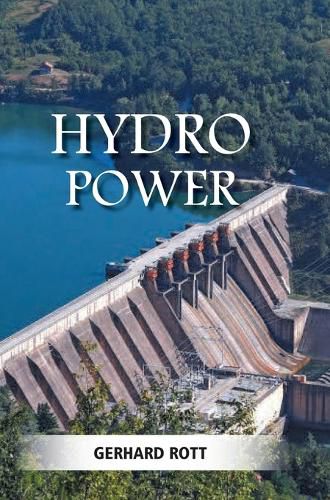Readings Newsletter
Become a Readings Member to make your shopping experience even easier.
Sign in or sign up for free!
You’re not far away from qualifying for FREE standard shipping within Australia
You’ve qualified for FREE standard shipping within Australia
The cart is loading…






This title is printed to order. This book may have been self-published. If so, we cannot guarantee the quality of the content. In the main most books will have gone through the editing process however some may not. We therefore suggest that you be aware of this before ordering this book. If in doubt check either the author or publisher’s details as we are unable to accept any returns unless they are faulty. Please contact us if you have any questions.
In the past, the development of hydroelectricity predominantly involved the construction of large dams. These massive structures, comprising concrete, rock, and earth, created artificial lakes and provided reliable power supplies, irrigation, and flood control. However, the construction of such dams came at a high cost. It resulted in the flooding of extensive areas of fertile land and the displacement of numerous local inhabitants. Over time, these dams faced challenges such as rapid silting, which reduced their productivity and lifespan. Additionally, interference with natural river flows caused various environmental issues.Recognizing the significance of hydroelectric power and its potential, the book "Hydro Power" offers an overview of global energy consumption and projections for energy demand. It delves into the utilization of hydraulic resources for electricity generation and highlights advancements in the field of hydroelectric power. This book serves as a valuable source of information for researchers, academics, policymakers, and practitioners interested in renewable hydropower technologies. Moreover, it has been designed to be a supplementary textbook for students studying hydropower plants, providing them with comprehensive insights into the subject matter. As we continue to explore and develop hydroelectric power, it is essential to prioritize environmentally benign technologies that minimize disruption to natural river flows and maximize the benefits for communities worldwide.
$9.00 standard shipping within Australia
FREE standard shipping within Australia for orders over $100.00
Express & International shipping calculated at checkout
This title is printed to order. This book may have been self-published. If so, we cannot guarantee the quality of the content. In the main most books will have gone through the editing process however some may not. We therefore suggest that you be aware of this before ordering this book. If in doubt check either the author or publisher’s details as we are unable to accept any returns unless they are faulty. Please contact us if you have any questions.
In the past, the development of hydroelectricity predominantly involved the construction of large dams. These massive structures, comprising concrete, rock, and earth, created artificial lakes and provided reliable power supplies, irrigation, and flood control. However, the construction of such dams came at a high cost. It resulted in the flooding of extensive areas of fertile land and the displacement of numerous local inhabitants. Over time, these dams faced challenges such as rapid silting, which reduced their productivity and lifespan. Additionally, interference with natural river flows caused various environmental issues.Recognizing the significance of hydroelectric power and its potential, the book "Hydro Power" offers an overview of global energy consumption and projections for energy demand. It delves into the utilization of hydraulic resources for electricity generation and highlights advancements in the field of hydroelectric power. This book serves as a valuable source of information for researchers, academics, policymakers, and practitioners interested in renewable hydropower technologies. Moreover, it has been designed to be a supplementary textbook for students studying hydropower plants, providing them with comprehensive insights into the subject matter. As we continue to explore and develop hydroelectric power, it is essential to prioritize environmentally benign technologies that minimize disruption to natural river flows and maximize the benefits for communities worldwide.